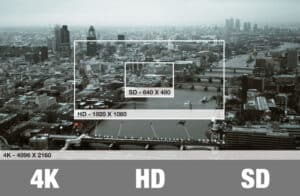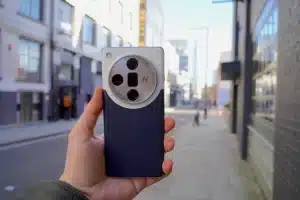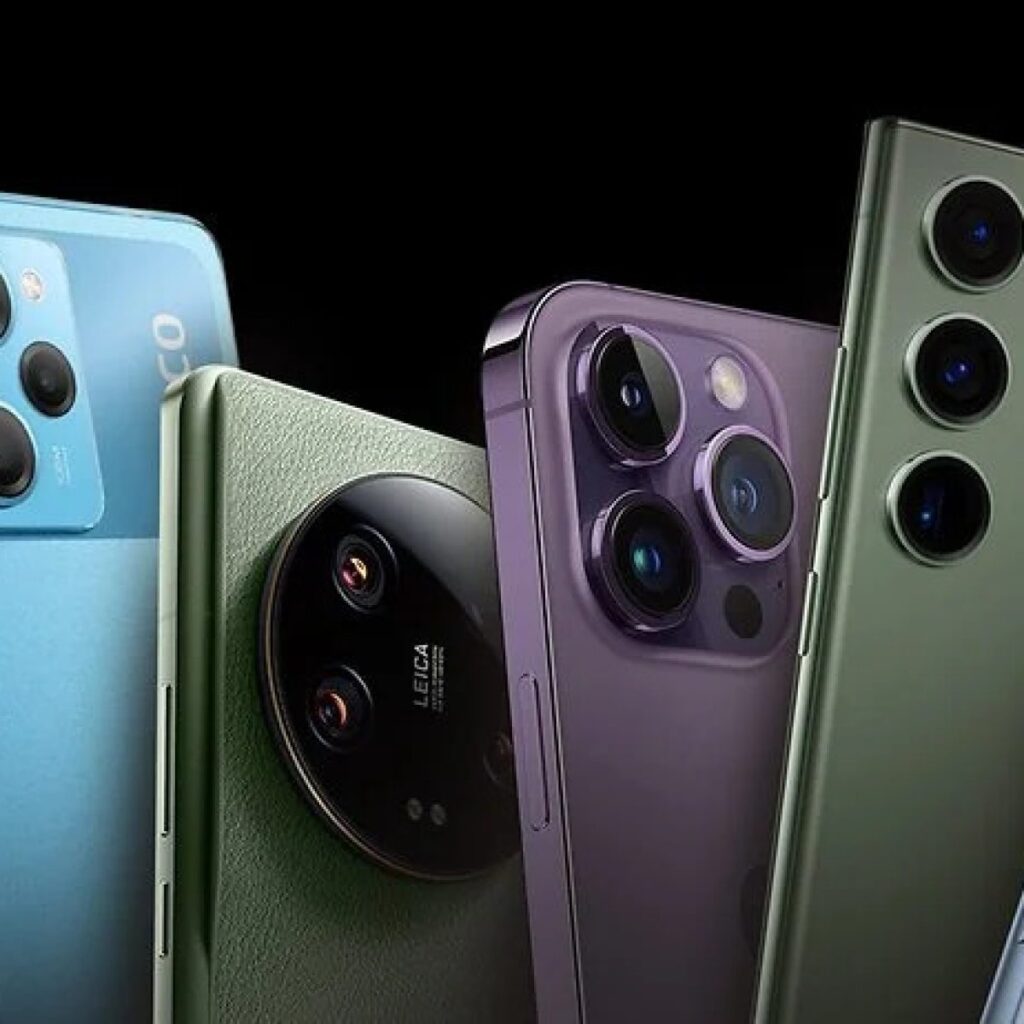Every moment in life can be an opportunity for a stunning snapshot. The evolution of smartphone cameras has been nothing short of extraordinary, and able to capture our daily lives, or make them seem more interesting than they really are via our social media. Picture this: a landscape bathed in the golden hues of a setting sun, a delicious display of food, a candid moment shared between loved ones, or the intricate details of a delicate flower captured in perfect clarity. These are the moments that define our lives, and it’s no wonder we’re constantly seeking new ways to capture them in all their glory.
But let’s face it, the journey from blurry, pixelated images to crystal-clear masterpieces has been anything but straightforward. From the early days of VGA resolution cameras to the cutting-edge technology of today’s ultra-high-definition sensors, the evolution of smartphone cameras has been a whirlwind of innovation and ingenuity.
Curiosity piqued, you’re here to delve into the ever-evolving world of smartphone cameras. Wondering what’s new, what’s changed, and how it all impacts your photography game?
The Early Days: VGA Resolution Cameras
![]()

![]()
![]()
Remember when VGA resolution was all the rage? It may seem like eons ago, but those humble beginnings laid the groundwork for what was to come. VGA, or Video Graphics Array, was the standard resolution for early smartphone cameras, offering a resolution of 640×480 pixels. While groundbreaking at the time, VGA resolution left much to be desired in terms of image quality. Images were often grainy and lacked detail, making them unsuitable for anything beyond basic snapshots.
VGA is the lowest resolution camera (less than a full megapixel). The general rule of thumb is, the more megapixels, the better the image.
Because a VGA picture is 640 pixels wide and 480 pixels high, it totals 307,200 pixels. This is approximately 0.3 megapixels, and results in a file size of about 1.17MB. A VGA picture will often look fine on a monitor, as monitor resolutions are low compared to those of printed documents. When printing pictures, the minimum recommended resolution is 300 pixels per inch. At this output resolution, the VGA picture would be 2.13″ x 1.6.” That’s smaller than a wallet size photograph.
The picture could be printed larger by reducing the resolution, but the individual pixels will become visible as boxes as the picture size increases.
This size is most common in current children’s cameras and webcams. Most digital cameras no longer use this outdated image resolution. The biggest advantage of VGA is the small file size, which allows you to take many photos that don’t take up much space. That’s great if you don’t have much storage space on your device, but what about our current updated smartphones?
The Rise of Megapixels: Transition to Higher Resolutions

Fast forward to the era of megapixels, where higher resolutions became the name of the game. As smartphone manufacturers upped the ante with each new release, the race for more megapixels was on. But what does it all mean for your photography? Simply put, more megapixels translate to sharper, more detailed images that capture every nuance of your subject. If you correlate resolution with quality, then more megapixels would equal better quality. However, a good camera consists of more than just high megapixel count. Dynamic range, autofocusing, read and write speed, and so many more features are just as important as having enough megapixels on your camera.
One million pixels is equivalent to a megapixel. Megapixels are the measurement of the resolution of still and video cameras, monitors and scanners. For example, a 16-megapixel (16MP) still camera captures a picture composed of some 15.9 million pixels, each pixel containing a red, green and blue color dot.
With resolutions reaching upwards of 108 megapixels in some flagship smartphones, today’s cameras are capable of capturing stunningly detailed images that rival those of professional-grade DSLRs.
For those photography experts, DSLR is a term that’s become synonymous with digital cameras, but a digital single-lens reflex camera (notable for allowing interchangeable lenses on the same camera body) is just one type of digital camera. They offer several advantages over smartphone cameras, including better image quality, more control over exposure and focus, and the ability to use interchangeable lenses.
The Samsung Galaxy S23 Ultra has rivaled that of a DSLR lens quality photograph. It has a powerful triple-lens rear camera system with a 200MP primary sensor and a 10MP front-facing camera. The S23 Ultra can take stunning photos in any lighting condition and has many advanced features like Nightography and Portrait mode. Of course the brand new Samsung S24 Ultra has an even more powerful primary sensor.
The Era of Dual, Triple, & Quad Cameras and Depth Sensing

Enter the era of dual cameras and depth sensing technology, where innovation knows no bounds. Dual-camera setups revolutionized smartphone photography, offering a depth and dimensionality previously unseen. By combining two separate lenses with varying focal lengths, smartphones could now capture images with a sense of depth and perspective that was once reserved for high-end cameras.
Google once insisted that its Pixel phones had no need for a second or third lens. It was a way for them to differentiate the Pixel from its competitors. Ironic, then, that the Pixel 4 features a two-camera module.
By why do modern smartphones so often include that second and even third lens in the main camera module? In essence, it’s a clever way around physical design constraints. Dedicated cameras aren’t expected to fit in your pocket. They have larger bodies that can hold larger sensors, and no one complains about protruding lenses.
Smartphones, on the other hand, must fit in your pocket. Plus, protruding lenses — aka camera bumps — are often seen as unaesthetic liabilities. That means manufacturers have to find other ways to meet consumer demand for more powerful and versatile smartphone cameras, specifically when it comes to zoom capability.
Rather than attempt to cram a longer optical zoom into a single camera setup, the best smartphone cameras now include up to four separate lens and sensor pairings arranged in multi-camera modules. This allows for a broader range of focal lengths as well as other optimizations and special features.
Most budget dual camera phones would only have a depth sensor for portrait shots, but with triple and quad camera phones coming in, the options have only increased. Triple and quad camera phones now offer the ability to take wide-angle and macro shots along with a telephoto lens sometimes that offers optical zoom. Think your phone has enough cameras? With the new Samsung Galaxy S24+ and S24 Ultra, you can choose from either the triple or quad camera options respectively.
But perhaps the most groundbreaking development of this era was the introduction of depth-sensing technology. By utilizing additional sensors to measure the distance between objects in a scene, smartphones could now create realistic depth-of-field effects, blurring the background to highlight the subject in stunning detail. Features like portrait mode and augmented reality became staples in the smartphone photographer’s toolkit, allowing users to unleash their creativity in ways never before possible.
Pixel Count vs. Sensor Size in Smartphones
![]()
Because of their design requirements, smartphones have smaller sensors than most dedicated cameras. Typically, this also means lower pixel counts, at least until very recently.
Pixel count is complicated, however. More is usually better, but not always. Sensors with higher pixel counts, and therefore smaller individual pixels, capture more detail when given enough light. On the other hand, fewer but larger pixels generally result in better sensitivity and a larger dynamic range.
Smartphone camera sensors need to strike a balance between detail and sensitivity. While 12 MP sensors are more common, the best smartphone cameras today offer up to an astounding 108 MP, as we see in Samsung’s Galaxy S20 Ultra.
With that camera, you have the option to switch from 108 MP to 12 MP. This takes the pixel size from 0.8 μm to 2.4 μm. You can, therefore, adjust the resolution to favor either detail or better low-light and mixed-light performance. You can also select the 12 MP option to save on storage space.
To do this, the S20 Ultra uses an increasingly popular technology called pixel binning. There are other phones that use pixel binning to boost low-light performance, but the S20 Ultra is unusual in that it gives the user control over this setting.
The bottom line is that high pixel counts make for impressive specs on paper, but sensor size will most likely have a larger impact on the final image.
From 4K Video to Ultra HD Photography

As smartphones became our go-to devices for capturing life’s moments, the demand for higher quality images and videos soared. Enter 4K video recording and Ultra HD photography, where every frame is a masterpiece waiting to be captured. With resolutions reaching upwards of 8K in some flagship smartphones, today’s devices are capable of capturing stunningly detailed images and videos that rival those of professional-grade cameras.
Like today’s camcorders and DSLRs, the best smartphones out now can capture 4K video at 30 frames per second. Ultra high-end phones go even higher with 8K recording.
Along with the increase in resolution, phones now offer higher frame rates like 60, 120, 240 and even up to 960 fps in lower resolutions for super slow-mo video. Look for high frame rate options if you want to add cinematic slow motion to your projects.
But it’s not just about resolution; advancements in image processing algorithms and sensor technology have also played a crucial role in improving overall image quality. From enhanced dynamic range to reduced noise in low-light conditions, today’s smartphones are pushing the boundaries of what’s possible in mobile photography.
Ultra-high definition (UHD) photography is a display resolution of 3840 x 2160 pixels. This is four times the resolution of HD, which is 1920 x 1080p. Most smartphones can take photos that are higher resolution than 4K, but they don’t call it 4K. The amount of megapixels on the camera identifies the photo resolution.
For example, to take a photo in 4k on an iPhone, go into your phone’s main Settings, choose Camera, then tap into Formats. From there, you’ll want to turn on Apple ProRAW and Apple ProRes. There’s a secondary setting under ProRAW where you can choose the resolution. A RAW file is an uncompressed and unprocessed image data captured by a digital camera’s sensors. RAW files are also called digital negatives.
Similarly, you can create these raw files for Samsung phones by going into the settings of the camera app, and tapping advanced camera settings, then Pro mode format, and choosing RAW format. Samsung also has an app called Expert RAW that can take RAW images. These types of photos preserve the sharpness and contrast of photos taken, and take up a larger amount of storage space from 10MB to 30MB for one photo.
Future Trends and New Technology
But what does the future hold for smartphone cameras? With advancements in computational photography and AI-driven features, the possibilities are endless. Imagine a world where your smartphone anticipates your every photographic need, capturing stunning images with just a tap of the screen.
From automatically adjusting exposure and white balance to removing unwanted objects from your photos, the next generation of smartphone cameras promises to revolutionize the way we capture and share our world. And with the advent of augmented reality technology, the line between the virtual and the real is set to blur even further, allowing users to seamlessly integrate digital elements into their photos and videos. The future of smartphone photography is brighter than ever, and the adventure is just beginning.
What are your favorite features that have changed the way you take photos with your smartphone? Is it the dual-camera setup on the latest Samsung Galaxy S24 Ultra? Or perhaps it’s the AI-driven enhancements that elevate your photos to new heights? Whatever it may be, one thing’s for certain: the future of smartphone photography is brighter than ever.
How has this technology transformed your photography journey? And more importantly, how will it continue to shape the way we capture and share our world?
